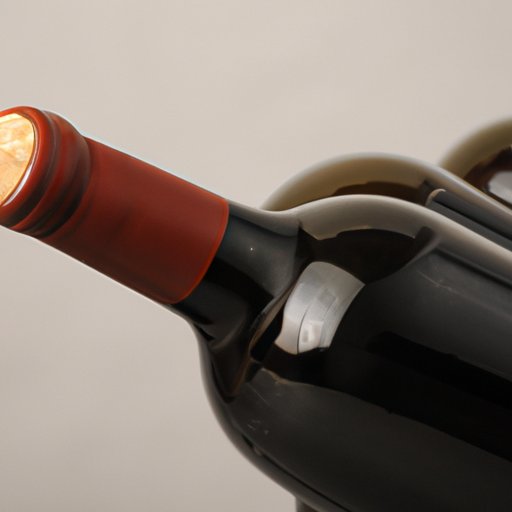Introduction
Have you ever wondered how much wine you’re really drinking when you buy a bottle? Not knowing how many milliliters are in a bottle of wine can lead to a range of issues, from overindulging to serving guests too little or too much. This article aims to provide a comprehensive guide to wine bottle sizes and why they matter.
How Many Milliliters Are in a Standard Bottle of Wine?
The answer is simple: 750 ml. However, the history of wine bottle sizes is far more complicated. For centuries, wine bottles came in different sizes, depending on the region and the winemaker. It wasn’t until the early 1970s that 750 ml became the industry standard.
At this time, European winemakers were struggling to export their wines to the US because of inconsistent bottle sizes. The solution was to standardize the size to 750 ml, which made shipping and pricing easier. Today, most wines come in this size bottle, although exceptions do exist.
Wine Bottle Sizes: A Guide to Understanding How Much You’re Really Drinking
Understanding the different wine bottle sizes is important, as it has an impact on both portion sizes and overall consumption. The most common sizes include:
- 187 ml (also known as a ‘piccolo’ or ‘split’): perfect for individual servings
- 375 ml (‘half-bottle’): good for couples who want to share a small bottle
- 750 ml (‘standard’): great for groups of four to six people
- 1,500 ml (‘magnum’): equivalent to two standard bottles, good for larger celebrations
- 3,000 ml (‘double magnum’): equivalent to four standard bottles, good for extended celebrations
When choosing a bottle size, consider how many people will be drinking, the occasion, and the type of wine you’re serving. For example, if you’re having a large dinner party, a magnum or double magnum can be a great centerpiece and ensure everyone has a glass. However, if you’re drinking a full-bodied red with just one other person, a half-bottle might suffice.
Why Are Wine Bottles 750 mL? And Do All Wines Come in the Same Size Bottle?
The reason most wine bottles are 750 ml is due to historical and practical reasons. In ancient Rome, wine was stored in clay amphorae. These containers typically held between 20 and 26 liters of wine, which was equivalent to around 26-35 standard bottles of wine today.
However, over time, winemaking evolved, and vineyards began producing smaller quantities of wine. In the 17th century, the glassblowing industry made it possible to produce glass bottles, which were much more convenient for storage and transport than clay amphorae. Different regions produced bottles of different sizes, but 750 ml became the most widely accepted in the mid-twentieth century.
Not all wines come in the same size bottle. Some wines, such as sweet dessert wines, come in smaller bottles, while larger bottles are reserved for more expensive wines or special occasions. Interestingly, some champagne bottles come in much larger sizes, including jeroboams, methuselahs, and salmanazars.
How Many Glasses of Wine Are in a 750 mL Bottle?
A standard bottle of wine should yield around five to six glasses of wine. However, it’s important to note that serving size can vary depending on the occasion and the audience. For example, if serving wine with a meal, an individual serving may be smaller than if it were served as part of a cocktail hour.
It’s important for people to keep track of their alcohol consumption and be mindful of serving sizes. Overconsumption of alcohol can lead to a variety of health issues, including liver disease, digestive problems, and high blood pressure. Properly understanding serving size can help prevent these issues and ensure a pleasurable drinking experience.
The Ins and Outs of Wine Bottle Sizes: A Beginner’s Guide
If you’re new to wine, the myriad of bottle sizes and shapes can be intimidating. However, understanding the basics can help you make the right decisions when it comes to choosing and storing wine.
When selecting a bottle size, consider the occasion, the number of people drinking, and your budget. If you’re new to wine, start with a standard 750 ml bottle and work your way up or down from there.
If you have leftover wine, there are several ways to store it, depending on the bottle’s size. For example, if it’s a half-bottle, consider pouring the remaining wine into a smaller container and storing it in the fridge. If it’s a larger bottle, consider using a wine preservation system, which extracts oxygen and seals the bottle to ensure the wine stays fresh for longer.
The Evolution of Wine Bottle Sizes: From Ancient Rome to Modern-Day America
The history of wine bottle sizes is long and fascinating. In ancient times, wine was stored in clay amphorae, which held large quantities of wine and varied in size. In medieval Europe, wine was stored in leather bags known as bota bags, which could be hung from the saddle of a horse or donkey.
With the advent of glassblowing, wine bottles became more commonplace. Early wine bottles were made in a range of sizes and shapes, including pear-shaped bottles and cylindrical bottles. It wasn’t until the 18th century that wine bottles began to take on a more uniform shape and size.
Today, wine bottle sizes vary depending on the region and the type of wine. While 750 ml is the most common size, some wines come in smaller or larger bottles for special occasions. Champagne, in particular, has a range of larger bottle sizes, which are often used for celebrations.
Conclusion
Knowing how many milliliters are in a bottle of wine and why bottle size matters is crucial for both novice wine drinkers and enthusiasts alike. By understanding standard serving sizes, selecting the right bottle size for different occasions, and storing leftover wine properly, wine drinking can be a pleasurable and healthy experience. With this guide to wine bottle sizes, you’ll never have to worry about serving too little or too much again.
